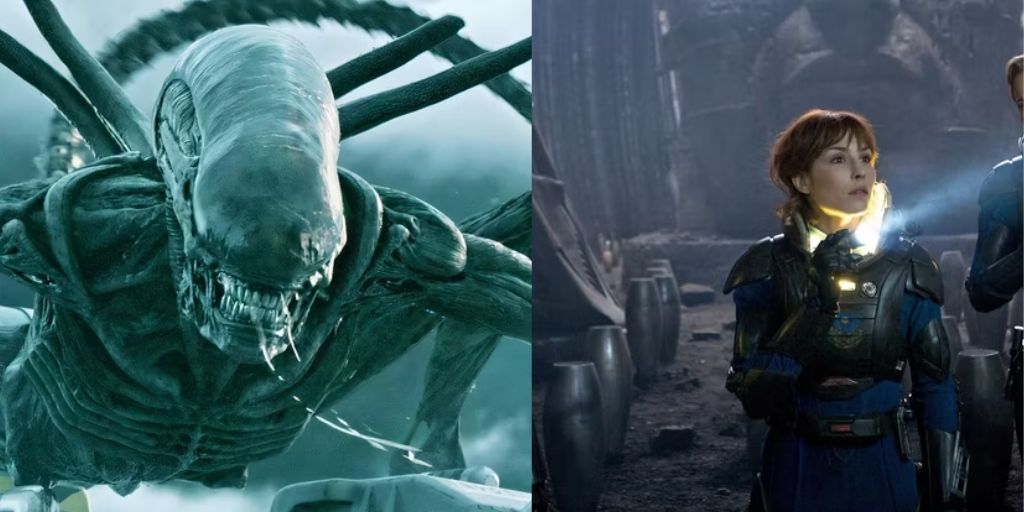You don’t have to sit through the credits for “Alien: Romulus,” as it skips the end-credits scene entirely. Staying true to the traditions of the Alien franchise, the film avoids the modern trend of adding post-credits teasers.
Directed by Fede Álvarez, who previously helmed 2013’s Evil Dead and Don’t Breathe, this new entry manages to rekindle the tense, atmospheric horror that made 1979’s Alien a classic. In many ways, “Alien: Romulus” serves as a homage to the original, taking inspiration from its minimalist tension and visual style.
It introduces a fresh group of characters, all of whom find themselves entangled in a dangerous salvage mission aboard an old Weyland-Yutani spacecraft.
While the omission of an end-credits scene may not surprise long-time fans of the series, Álvarez’s film still manages to deliver a few surprises throughout its runtime. Fans will find plenty of nods to the franchise’s rich history, as well as hints of what might lie ahead for the series.
We won’t spoil these moments for you, but rest assured, you can leave the theater without worrying about a hidden Facehugger springing out from the shadows during the credits.
Does ‘Alien: Romulus’ Leave Room for a Sequel?
Without giving away any key plot points, it’s safe to say that the ending of “Alien: Romulus” leaves a potential sequel open, though it doesn’t directly set one up. The film is a standalone entry in the Alien universe, offering a self-contained story.
However, certain key elements introduced in the film’s lore could be explored further in future installments. Álvarez’s film goes into some significant new ideas that might connect to the upcoming TV prequel, “Alien: Earth,” which will cover the origins of the fearsome Xenomorph creatures.
Set long before the events of the original Alien film, the show will show early incidents that set the stage for the terrifying events of the 1979 classic.
The possibility of a sequel to “Alien: Romulus” largely depends on how well it performs at the box office. The past few Alien films have faced hurdles in terms of critical and financial success.

Director Ridley Scott’s prequels, Prometheus and Alien: Covenant, aimed to serve as the opening chapters in a grand saga within the Alien universe.
These films explored the origins of the Xenomorph and introduced a villainous android named David (played by Michael Fassbender) as the one responsible for the creature’s creation. Using a mysterious black goo, David engineered and mutated various life forms to create the Xenomorphs that haunt the franchise.
Unfortunately, both Prometheus and Alien: Covenant failed to meet the studio’s high expectations, and Scott’s plans for additional films were shelved before “Alien: Romulus” was greenlit.
What Is ‘Alien: Romulus’ About?
“Alien: Romulus” is set 20 years after the events of 1979’s Alien and roughly 37 years before 1986’s Aliens. The film introduces an entirely new cast of characters and centers around Rain, played by Cailee Spaeny.
Rain is a young woman trapped in a desolate and hostile mining colony, longing to escape the oppressive conditions of her life.
Desperate to leave, she reluctantly agrees to join an illegal salvaging operation. Her plan to flee the colony seems like her only chance for freedom, but she soon finds herself and her companions caught in a nightmarish struggle for survival.
True to the Alien franchise’s legacy, “Alien: Romulus” plays off the series’ iconic tagline, “In space, no one can hear you scream,” making it clear that the crew will soon face unimaginable horrors.
The film takes inspiration from the work of H.R. Giger, whose nightmarish designs for the original Alien creatures remain some of the most memorable aspects of the series.
Álvarez incorporates practical effects into his film, paying tribute to the practical designs that made Giger’s creatures so terrifying in their lifelike realism. The alien creatures in “Alien: Romulus” are just as haunting, and the practical effects used help enhance their presence.
The official synopsis for “Alien: Romulus” reads:
“Alien: Romulus takes the phenomenally successful Alien franchise back to its roots: While scavenging the deep ends of a derelict space station, a group of young space colonizers come face-to-face with the most terrifying life form in the universe.”
What’s Next for the Alien Franchise?
Whether we’ll see a direct sequel to “Alien: Romulus” remains uncertain. Much depends on how the film performs at the box office and how well it is received by fans and critics. However, there are already confirmed plans for the franchise outside of movie theaters.
The upcoming prequel series, “Alien: Earth,” is being developed by Noah Hawley and promises to show areas of the Alien universe that fans have long been curious about.

The series will take place 30 years before the events of the 1979 Alien film and will goes into the motives behind the Weyland-Yutani corporation’s drive to dominate space. Fans will finally learn more about the corporation’s history and its dark ambitions, as well as the origins of the Xenomorph monster.
For now, we’ll have to wait and see whether Álvarez’s Alien: Romulus becomes a box office success and whether it leads to a continuation of this new story thread.
In the meantime, fans can look forward to “Alien: Earth,” which will expand the Alien universe in fresh and exciting ways. “Alien: Romulus” hits theaters on August 16.




